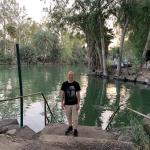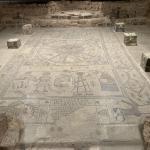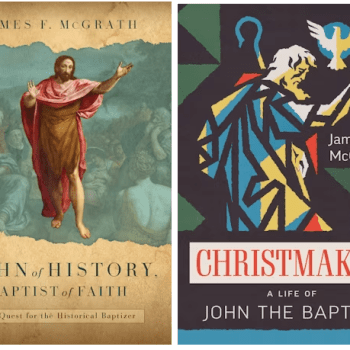Reinhardt Pummer’s book The Samaritans: A Profile offers an extremely helpful overview of the history literature and archaeology of the Samaritans including some of scholars’ most significant debates and discussions about where they came from who they are and how we answer those questions. While most academics who study ancient Judaism and/or early Christianity will know a little about the Samaritans, few of us know as much as we ought to. Among the important topics that Pummer covers is how we know Josephus is wrong about certain details related to the Samaritans, the Samaritan synagogues that have been excavated, and the texts and phrases that appear on Samaritan amulets. For me in particular, the discussion of Dositheus and Simon Magus is especially interesting, since the Syriac author Theodore bar Koni identified the Mandaeans as “Dostheans.” Samaritan literature talks quite a bit about the Dustan sect which abolished feasts and blood sacrifice, expected the resurrection of the dead to happen soon, and prayed standing in water. That this might have something to do with John the Baptist’s movement is a very intriguing possibility. According to Samaritan sources, Dositheans persisted among them until the 9th century. Other subjects, such as Samaritan music and their history over the past millennium, are also things that I found profoundly interesting.
Of related interest, Jim Davila drew attention to the reactions of the Samaritans to the opening of the archaeological site on Mt. Gerizim to visitors. Here’s an excerpt from the article:
In 2012 the Israel Nature and Parks Authority began new works under the authority of the Civil Administration, and two weeks ago a newly restored, impressive Samaritan residential compound was open for visitors, enabling them to experience history by walking through the ancient rooms.
The compound, dated at around 200-300 BCE, is part of a large city from the Persian and Hellenistic periods which was built around a sacred precinct where once stood the Samaritan Temple, and where today stands the remains of a large Byzantine church built on top of the destroyed Temple, a heavy wall cutting right through the holy Samaritan site where Samaritan tradition holds the Tabernacle stood. During the Muslim period a military guard post was built over one of the church’s towers.
The archaeological remains go back about 2,400 years, said site director Netanel Elimelech, with the remains of the Samaritan Temple from the Persian era the oldest.
Solomon Brown’s thesis, “A critical edition and translation of the ancient Samaritan Defter (i.e.liturgy) and a comparison of it with early Jewish liturgy,” is available online. So is Cowley’s edition of the Samaritan liturgy.
The blog Scribes of the Kingdom mentioned Simon Magus, a Samaritan who may help make a connection between John the Baptist and Gnosticism in general (as well as perhaps the Mandaeans more specifically):
John Squires wrote a couple of blog posts on Samaria in the Gospel of Luke:
Through Samaria, heading to Jerusalem (Luke 9; Pentecost 3C)
Sent out in Samaria, proclaiming the kingdom (Luke 10; Pentecost 4C)
The Good Samaritan – A Story Told in Samaria?
Ian Paul discussed the passage in which Samaritans reject Jesus:
Bob Cornwall also blogged about that text
I will soon blog about my first visit to Samaria this summer. Stay tuned!














